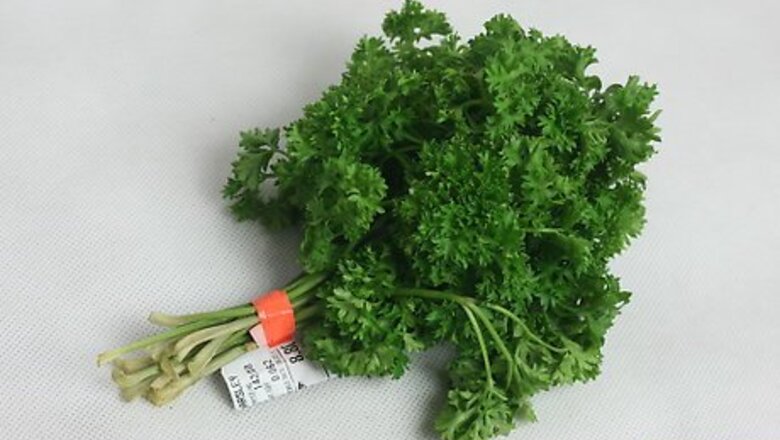
views
Choosing the herbs for drying
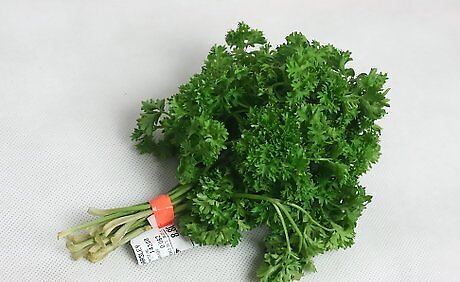
Choose herbs for drying. Some herbs are easier to dry than others owing to their stronger leaves and oils. However, almost all herbs can be dried in one or another. Trial and experiment is the best way to find out which herbs dry best for you, with the expectation that some herbs will shrivel up and look like a brown mess when dried, while others will retain color and texture well. Strong leaved herbs tend to be the easiest herbs to dry. These include bay leaves, rosemary, thyme and sage. A dried bay or rosemary leaf will usually retain its color and shape without any difficulty.Dry Herbs Step 1Bullet1.jpg Tender broad leaved varieties can be a bit trickier, as they are easily affected by moisture and can quickly turn moldy if not dried properly. The types of herbs in question include basil, parsley, mint, tarragon, cilantro and lemon balm. These need to be dried quickly to prevent molding.Dry Herbs Step 1Bullet2.jpg
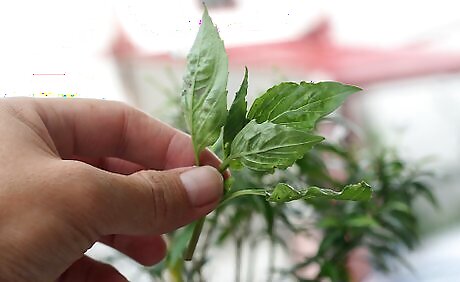
Harvest herbs for drying just before their flowers open. There will be plenty of buds to signify that flowering is about to occur. As for the time of day, generally it is best to harvest herbs after the dew has evaporated but before the sun has had a chance to evaporate the volatile oils in the herbs. This is usually early morning, give or take a bit for the specifics of your location. Although generalist advice is to harvest herbs before the flowers open, it pays to experiment. Sometimes it's better to harvest after. It all depends on which form will allow the herbs to hold their shape and flavor best. And if you actually want flowers, then it makes sense to wait until the herb flowers first.
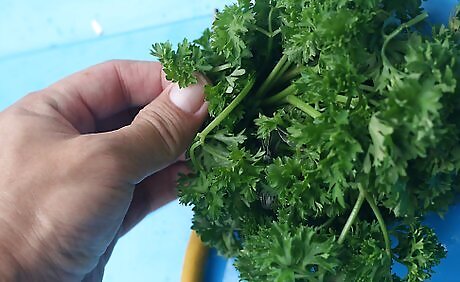
Prepare for drying as soon as you've harvested the herbs. The herbs will preserve best if they're dealt with immediately; allowing them to wilt or sit around and gather moisture or dust will spoil their flavor, color and appearance.
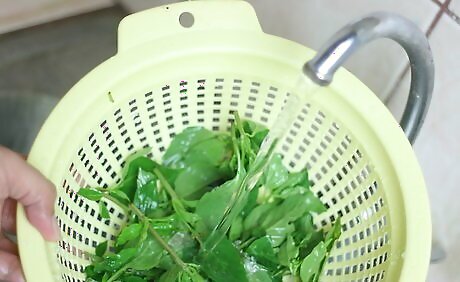
Clean the herbs if needed. Some herbs may need rinsing first, and a pick over to remove debris such as dried grass or weeds. Herbs can be gently rinsed under cool water, and given a minimal shake to remove excess moisture. Discard leaves with blemishes, bruising or imperfections.Dry Herbs Step 4Bullet1.jpg
Simple quick dry for cooking
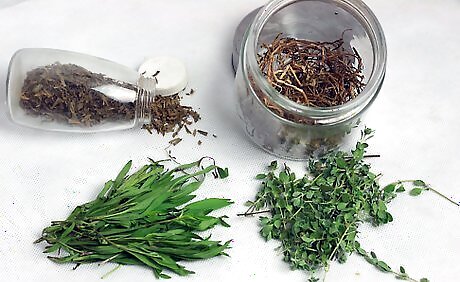
Pick the herbs for cooking with.
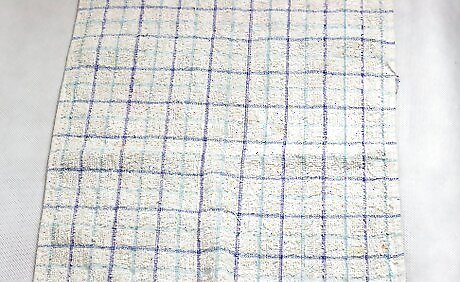
Lay a clean tea towel out flat on a suitable surface. A kitchen bench or the sink are ideal spots. Alternatively, use a dish drying rack. Lay the tea towel on the rack; this will allow for greater air circulation.Dry Herbs Step 6Bullet1.jpg
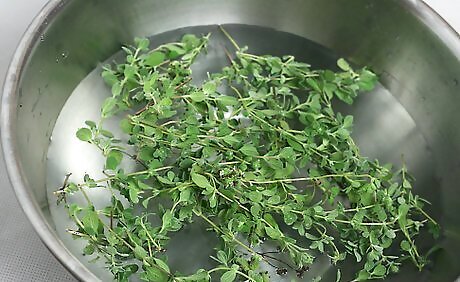
Wash the herbs gently. Use the least amount of water possible to avoid crushing or bruising the herbs. Perhaps lay herbs in a colander under running water, or just hold the herbs under the water. Finish with a gentle shake over the sink to dislodge as much of the water as possible.
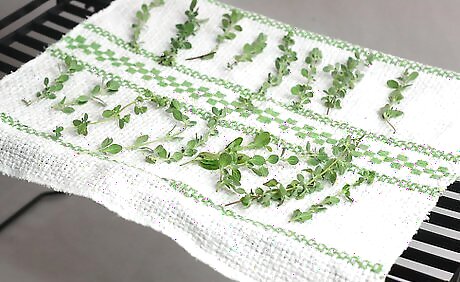
Lay each herb stem/stalk or sprig on the tea towel. Lay across the tea towel if you have more than one. Try to prevent too much overlapping.
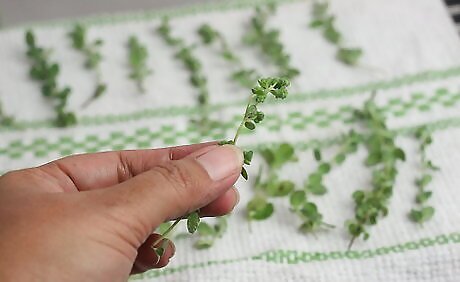
Let dry in a warm kitchen. Touch to feel if the herbs are dry. When the herbs are dry enough, use in the recipe as required.
Drying in the sun or outdoors
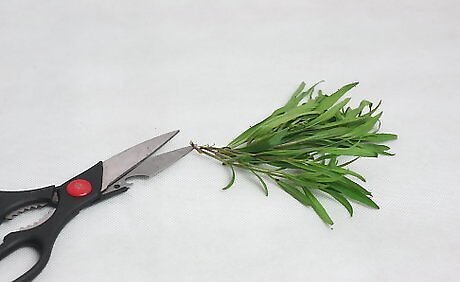
Cut the herbs when the dew has dried off them.
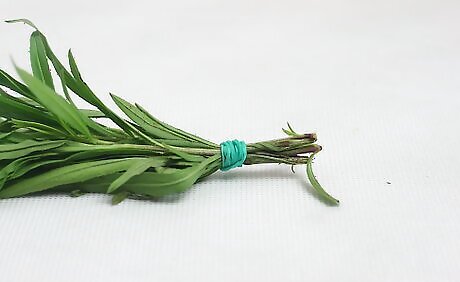
Tie into a bundle with a rubber band. Keep the leaves and flowers facing downward.
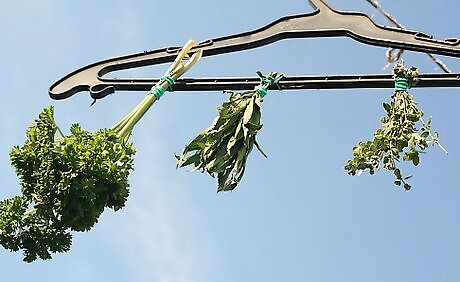
Hang somewhere on the porch or off a hanger in a spot that gets full sun. Leave for several days to dry, checking every now and then. Be sure to tie on securely in case of windy days.Dry Herbs Step 12Bullet1.jpg
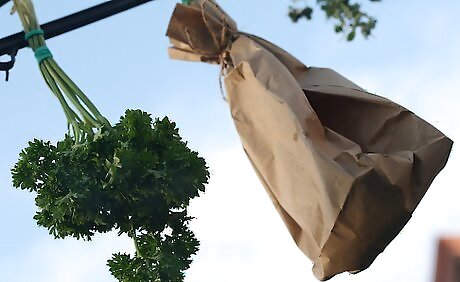
Dry outdoors inside a paper bag. After bundling, tie a paper bag around the bundle. Hang the whole bag outside. The bag will provide more protection against the sunshine. It will also catch any seeds that dry too, if you want to collect them.
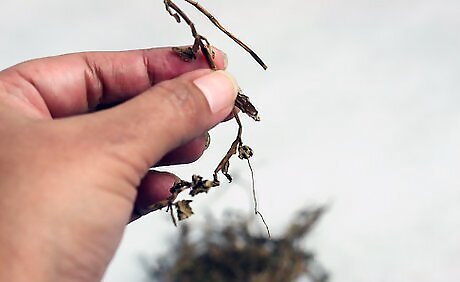
Remove when dried. The herbs are dried when they just become crisp and no moisture can be felt.
Air drying indoors
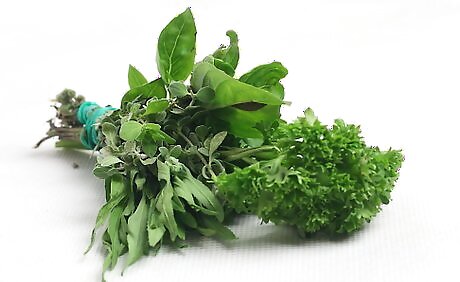
Bundle the herbs into a bunch. Tie a rubber band around the stems of the herbs. Any flowers on the herbs should face downward. Drying times will likely vary if bundling together different types of herbs, so consider only making bundles of a single type of herb until you're more experienced and can mix the herbs knowing the drying times specific to each.Dry Herbs Step 15Bullet1.jpg If you're doing a set of herb bundles, you might consider keeping the bundles sizes similar, so that the drying times coincide. This makes it easier when it comes time to store or used the dried herbs, so that you don't have to wait for the next bunch to dry. But it all depends on what you're doing with the herbs and your immediate needs.Dry Herbs Step 15Bullet2.jpg
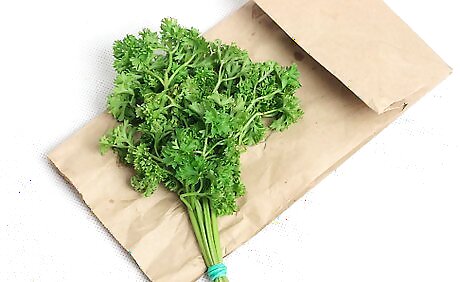
Choose whether or not to use a paper bag. The paper bag can speed up the drying process and catch falling seeds, leaves, etc. On the other hand, having no bag means you can have some lovely bunches of herbs on display in your home.
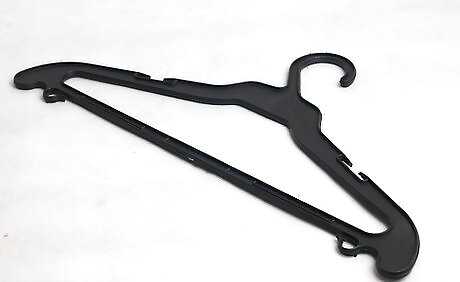
Select a suitable drying hanger. All sorts of items can be used to hang herbs from, including ladders, ceiling beams, coat hangers, a nail, etc. Herbs can also be dried on a rack or screen. An old window screen can be used if clean and in decent shape. Position such a screen to allow the air to move freely both sides of the screen. If using a screen, you'll need to turn the herbs daily to prevent curling.Dry Herbs Step 17Bullet1.jpg
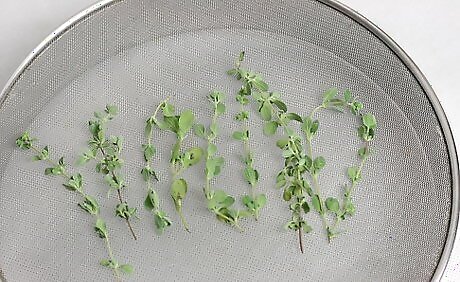
Leave to dry. Herbs should dry away from direct sunlight and moisture or they will spoil. Drying times will take anywhere from 5 days to a few weeks, depending on the types of herbs you're drying.
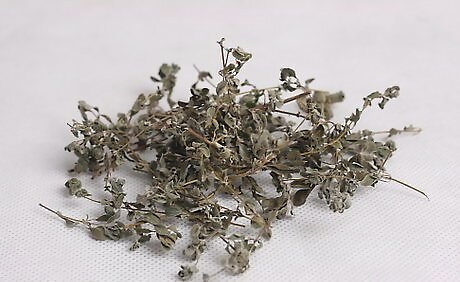
Remove when dried. The herbs are dried when they just become crisp and no moisture can be felt.
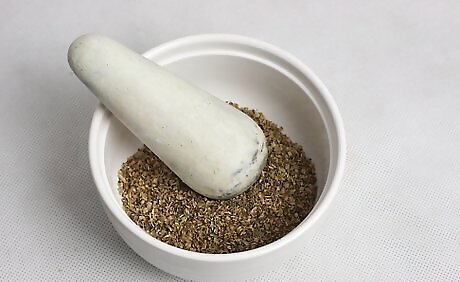
Use for culinary, medicinal, display or craft purposes. Many dried herbs will crumble readily, making them easy to turn into herb mixes such as bouquet garni. Dried herbs are often great additions to potpourri too.
Drying in the Oven

Set the oven to a very low temperature, the lowest it will go. Leave the door open.
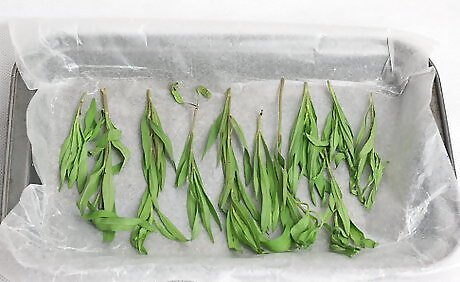
Arrange the picked herbs across a baking sheet.
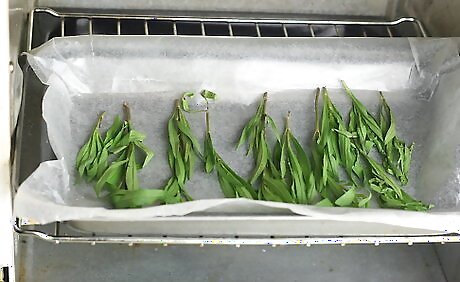
Place the sheet in the lowest level of the oven. Let dry but turn the herbs frequently. When they appear a little crisp, remove from the oven.
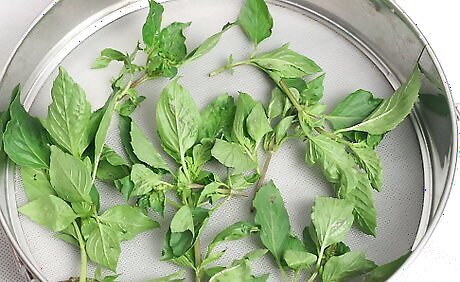
For those with a wood oven, screen racks can be placed on top of the wood stove. Lay the herbs across it to dry in their own time.
Drying by microwaving
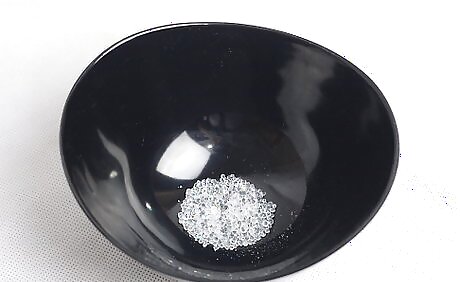
Sprinkle a thin layer of silica gel on the base of a microwave-safe container.
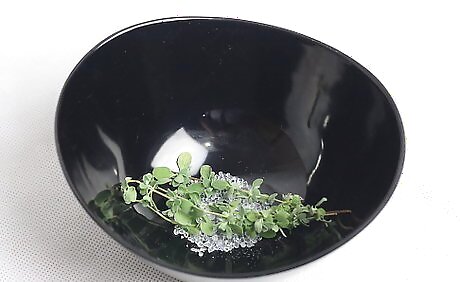
Add the herb leaves or flowers to this layer. Spread evenly and avoid touching leaves or flowers between each herb piece.
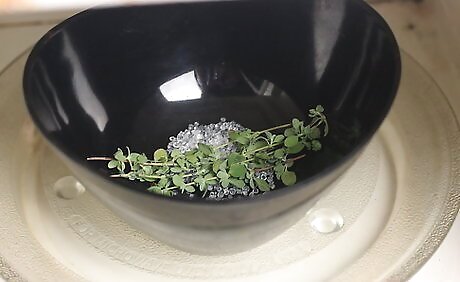
Microwave the herbs. Use a lower power setting, such as the half power or defrost power settings. Dry for 2 minutes, then let sit for 10 minutes. Check for the level of dryness. If it is sufficient, then use the herbs as required. If not, do another dry for about 1 minute. If the drying of 2 minutes proves too long and the herbs have dried out too much, use a new set of herbs and reduce the drying time by 30 seconds. Keep experimenting to reach the right timing, depending on the type of herb. Herbs that tend to air dry well with little shrinkage (such as thyme) will need less time in the microwave than herbs that don't air dry as well (such as basil).
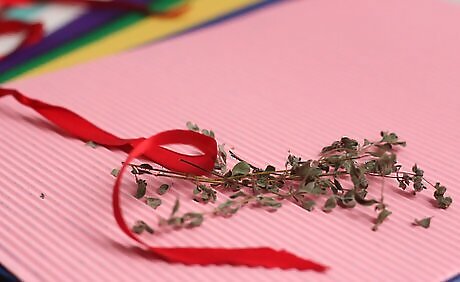
Use for craft and display projects only. As already noted, the silica use means that the herbs are no longer safe for consuming.
Drying using desiccants
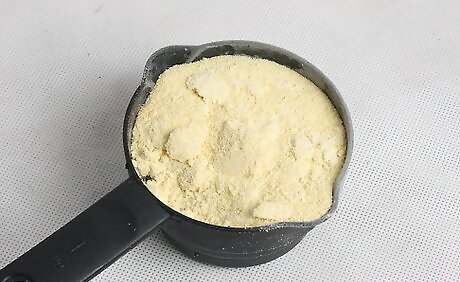
Choose a desiccant. A desiccant is a substance that draws moisture out. Suitable desiccants for herbs include cornmeal, sand, orris root, borax, silica gel and even kitty litter. Silica gel is popular because it is light and won't crush the herbs; it is easily obtainable from craft stores. However, when working with it, wear a mask to avoid breathing in its fumes.
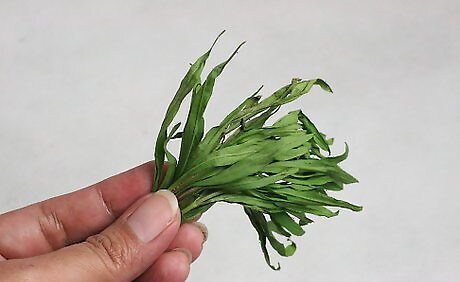
Pick the herbs. Pick when moisture won't affect the herbs or their flowers.
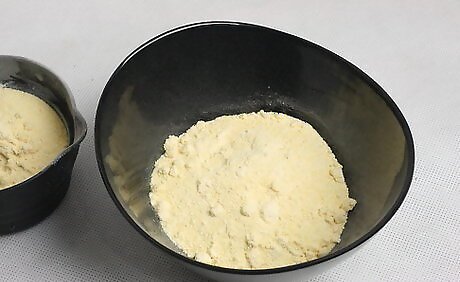
Sprinkle 2.5cm/ 1/2 inch of desiccant across the base of a glass or plastic container. Glass and plastic won't create moisture.
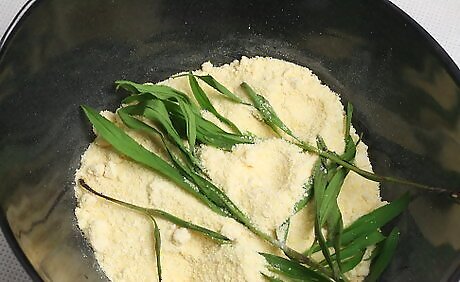
Place the herbs onto the desiccant. Keep any flowers separate from one another (not touching). Leaves and petals that are close together will require pulling apart to ensure the desiccant goes in between gaps and dries out every part of the herb. If the shape of the petals or leaves is important, check for any that get bent out of shape and realign them as you're rearranging the desiccant. You can layer desiccant and herbs if wished; just be aware that the more weight on top, the more the plant matter beneath risks being crushed.
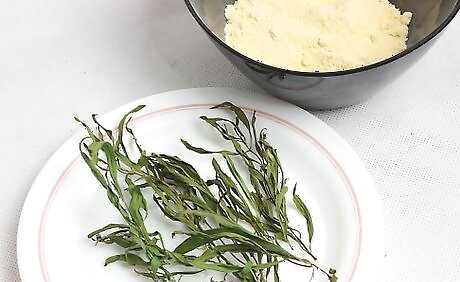
Remove from the desiccant as soon as they have dried. This will only take a few days. Desiccant will leave herb leaves and flowers bone-dry and therefore somewhat brittle. To remove desiccant, use a small brush or a camera cleaning bellows to shift desiccant off the plant matter without damaging the plant. Handle with care. Avoid over drying the herbs or they may simply fall apart when handled.
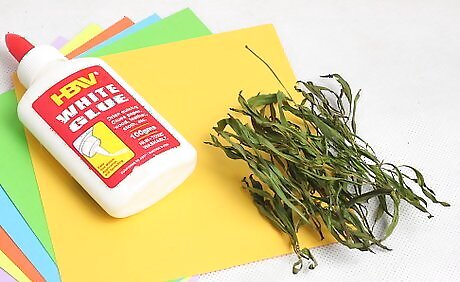
Use for craft and display projects only. The herbs are not suitable for consumption.
Drying in Place
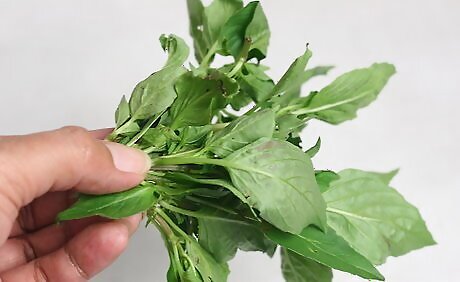
Choose an appropriate herb for drying in place. Not all herbs will dry well in this manner but some leaves and flowers will dry this way, such as yarrow, fennel and rosemary.
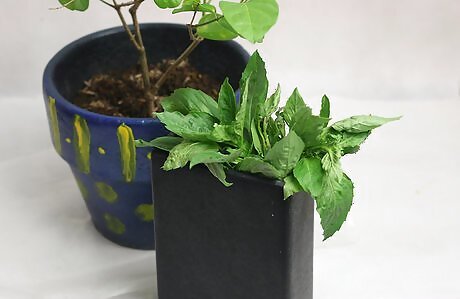
Use the fresh herb to add to the position where you want it to dry. For example, in a vase/bouquet with other plants being arranged or add to a craft project such as a wreath or a woven plant object.
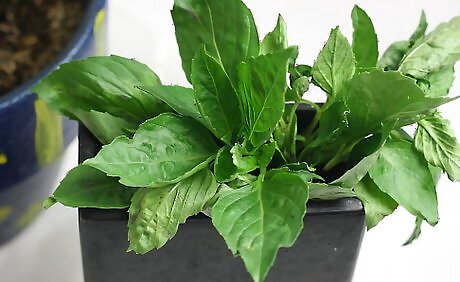
Place in a dry area without moisture. Allow to dry as is, but do check on it regularly. If you see signs of mildew or anything else that doesn't look right, remove the herbs.
Drying by pressing
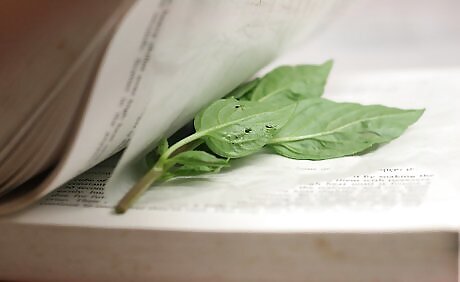
For information on pressing plant material, see further How to press leaves. Pressed herbs can be used to decorate craft projects such as scrapbooks, framed prints, bookmarks and collages.
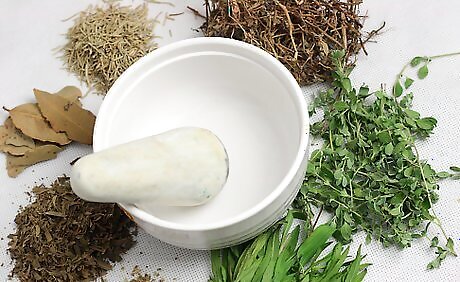
Finished.




















Comments
0 comment